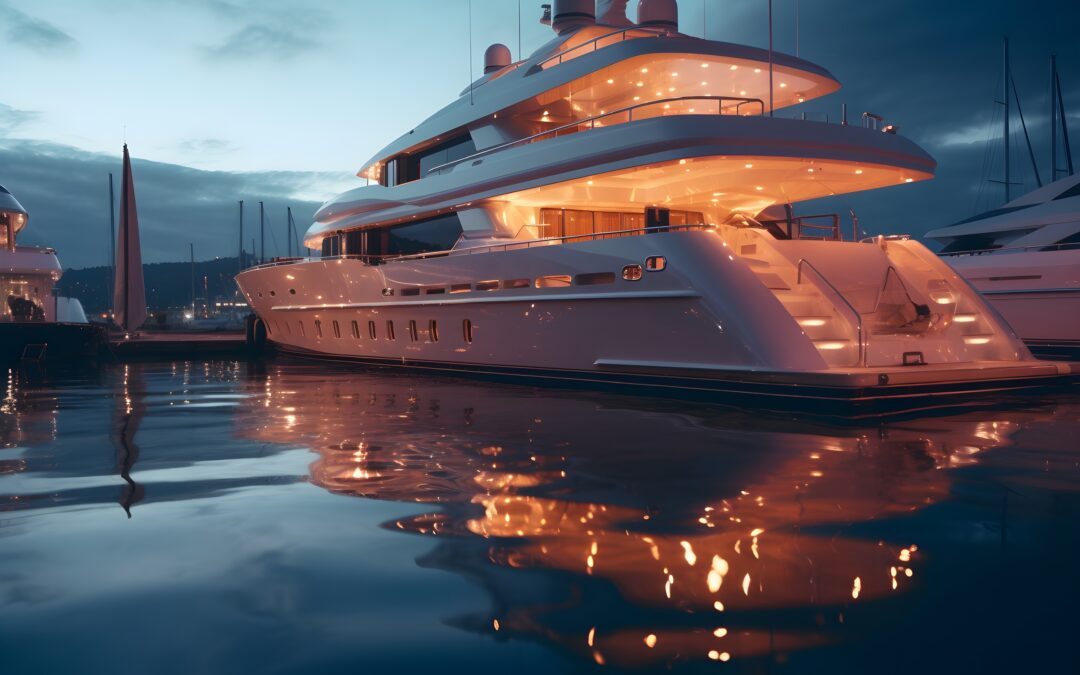Sailing smoothly: Ensuring the longevity of large yachts through Materials Mastery. Part 2.
Case study: Strategic Selection of Stainless Steel Grades (316L vs. 2205) in Ship Construction for Marine Environments.
Introduction:
The choice between stainless steel grades 316L and 2205 plays a crucial role in ship construction for marine environments, where corrosion resistance, strength, and cost-effectiveness are paramount considerations. This case study provides guidelines for selecting the appropriate stainless steel grade based on specific applications within a ship to ensure optimal performance and longevity in challenging marine conditions.
Guidelines for Stainless Steel Grade Selection:
Exterior Hull Components:
Recommendation: Stainless Steel 316L.
Reasoning: For exterior hull components exposed to seawater and marine pollutants, stainless steel 316L is preferred due to its excellent corrosion resistance in non-aggressive environments and ease of maintenance. Regular cleaning and maintenance routines can help preserve the integrity of 316L in these applications.
Propeller Shafts and Components:
Recommendation: Stainless Steel 2205.
Reasoning: Propeller shafts and components require a material with high strength, corrosion resistance, and resistance to stress corrosion cracking. Stainless steel 2205, with its superior mechanical properties and resistance to chloride-induced corrosion, is the ideal choice for ensuring the reliability and longevity of critical propulsion elements.
Interior Bulkheads and Structural Supports:
Recommendation: Stainless Steel 316L.
Reasoning: Interior bulkheads and structural supports benefit from the formability and weldability of stainless steel 316L, making it a suitable choice for non-load-bearing components that require good corrosion resistance and aesthetic appeal in ship interiors.
Piping Systems and Valves:
Recommendation: Combination of Stainless Steel 316L and 2205.
Reasoning: Piping systems and valves in ships may encounter varying levels of corrosion depending on the fluid being transported. Utilizing 316L for general piping and 2205 for critical sections exposed to corrosive fluids can optimize cost-efficiency and performance in the overall system.
Deck Railings and Handrails:
Recommendation: Stainless Steel 316L.
Reasoning: Deck railings and handrails require a material with good corrosion resistance, aesthetics, and ease of maintenance. Stainless steel 316L’s versatility and resistance to atmospheric corrosion make it a suitable choice for these visible and functional components.
Conclusion:
Strategic selection of stainless steel grades, such as 316L and 2205, in ship construction for marine environments is critical to prevent specific corrosion failures in the future. By adhering to the recommended guidelines for material selection based on application-specific requirements, shipbuilders can significantly reduce the risk of corrosion-related issues and ensure the long-term performance and integrity of marine vessels.
To make objective decisions and avoid potential failures, shipbuilders should consider engaging with expert consultancy services and utilizing laboratory testing programs. These resources provide valuable insights into material quality, compatibility, corrosion resistance properties, and performance evaluations, enabling informed decisions that align with industry standards and best practices. By leveraging expert support, Yacht builders can optimize material selection, mitigate corrosion risks, and enhance the reliability and safety of yachts operating in challenging marine conditions.

Proper selection of stainless steel will ensure integrity and money savings.

